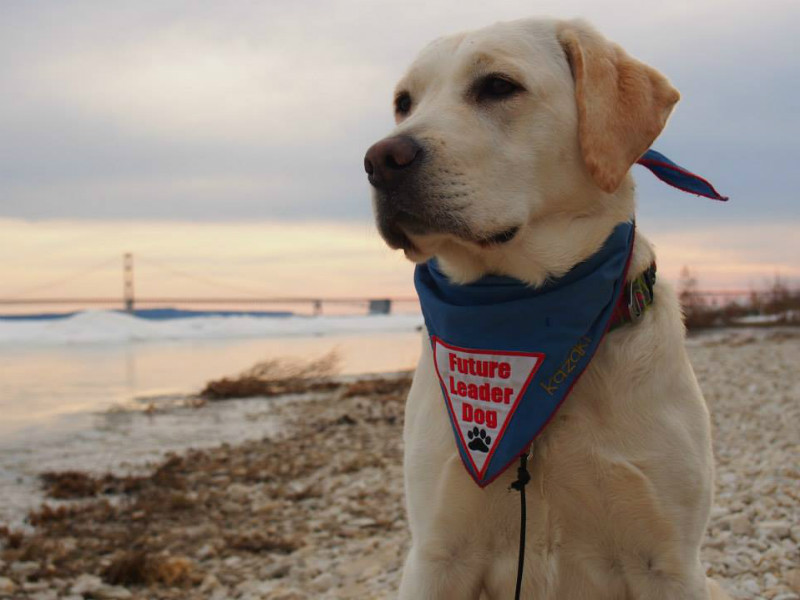All dog owners knows the bond they share with their dog is special, but when it comes to service dogs for the blind and visually impaired, the owner and dog form a true partnership. The dog relies on the owner for instruction and direction, yet the owner relies on the dog to keep him safe and independent.
Leader Dogs for the Blind
Leader Dogs for the Blind operates one of the most state-of-the-art and respected guide dog programs in the world, providing guide dogs for clients who are blind, visually impaired, or deaf-blind, across the United States, Canada, Mexico, and even farther afield. The organization's mission is to empower people who are blind or visually impaired with skills for safe and independent daily travel, with the help of guide dog training, GPS technology, orientation and mobility training, and the Summer Experience Camp for kids. These programs are provided free to clients thanks to the generous donations of supporters.

According to Rachelle Kniffen, Director of Communications and Marketing for Leader Dogs for the Blind, the organization matches approximately 200 dogs with clients every year. However, demand is expected to grow as our population ages. Also, as guide dogs become more acceptable in our society, partnership with a guide dog becomes more appealing. Kniffen explains, “Even though they’ve been out there now for over 70 years, there are some areas that are becoming more and more accepting to having the dogs out in the environment, and that makes it more attractive to people who are blind or visually impaired to want to match up with a dog.”
Puppy Breeding
To meet demand, Leader Dogs for the Blind maintains a breeding stock of approximately 86 dogs. Almost all the puppies that enter their program, including Golden Retrievers, Labrador Retrievers, Golden Retriever and Labrador Retriever crosses, and German Shepherd Dogs, come from this breeding stock. Dani Landolt, director of corporate relations for Leader Dogs for the Blind, confirms that 454 puppies were born into the program in the last year.
Breeding stock dogs live with volunteer families, except when they go into season, at which time they go to Leader Dogs for the Blind’s campus for breeding. Then it’s back home to the volunteer families, who whelp the puppies and keep them for the first six weeks. During that time, the puppies begin their training. They are asked to sit to receive attention from humans, including for food, and learn to accept human touch and grooming. Landolt appreciates the dedication of these volunteers, “It’s very interesting that these are just volunteer families that are helping us out and dedicating, not only their time, but actually their homes, to our breeding stock, as well as to the puppies.”
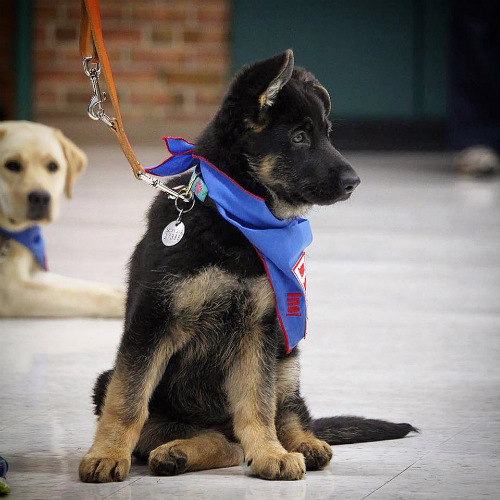
At the six-week mark, the puppies return to Leader Dogs for the Blind for a health check and vaccinations. Those puppies that receive a clean bill of health enter the next phase of their journey when they go to a volunteer puppy raiser who will be responsible for their care, health, and basic training until they are approximately 14 months old. Then the puppy raiser will return the dog to Leader Dogs for the Blind, so formal guide dog training can begin. There are puppy raiser volunteers all over the United States. Landolt says, “We have puppies being raised in 21 different states for leader dogs right now, which is pretty awesome.”
Formal Training
When the adult dogs are returned to Leader Dogs for the Blind, they are assessed for their suitability for the guide dog program. Kniffen explains, “That’s when they’re looking at more of the personality attributes, the friendliness of the dog, how they react to traffic and things out in the community, their ability to listen and follow basic obedience, things like that.” Not all dogs are considered a good fit for the training program. In fact, only about 45 percent of the dogs make it through the program to be matched with a client.

The dogs that don’t qualify for the formal training, or that don’t graduate successfully, may qualify for a career change. According to Kniffen, “The first thing we do is look to see, depending on why the dog is getting the career change, if there is possibly another line of service that might better fit that dog.” For example, he might become a service dog for a different kind of organization, like police, customs, or another form of assistance dog. If there is no appropriate line of service, the puppy raiser is offered the dog back as a personal pet. If that person doesn't take the dog, then it is offered for adoption to the general public.
The dogs that enter formal training undergo four months of intense education with a guide dog mobility instructor (GDMI) before spending a fifth month being matched with a client. The GDMIs use positive reinforcement training and are always on the lookout for innovative techniques. For example, several years ago, the instructors began using clicker training to sharpen some of the dogs’ skills. One of those skills is helping their owner find a chair in a doctor’s office. With the use of clicker training, the dogs have been taught to lead their owner to an empty chair and to place their nose right in the middle of the seat. The owner can then run his hand along the dog’s body to locate the exact place to sit down. Kniffen clarifies that it gives the training extra precision. “We’re able to focus where the dog leads the person to.”
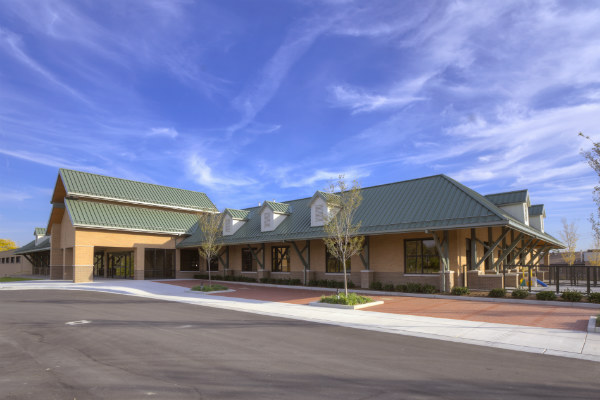
During their time on campus in the training program, all the dogs are fed Purina Pro Plan. In fact, Purina donates 56,000 pounds of food each year to feed all the trainees. Landolt says, “What’s great about that is Purina® Pro Plan® was actually the nutrition of choice for us before it was ever donated. So our vet team had selected it as the best food for the best performance from our dogs.” In addition, all the breeding stock dogs are fed Purina Pro Plan, and the puppy raisers are asked to feed Purina Pro Plan because those puppies will be placed on Purina Pro Plan when they return to campus for training. And because this food has proven so effective, Leader Dogs for the Blind recommends their clients continue to feed Purina Pro Plan to their guide dog when they get him or her home.
Matching Clients With the Right Dog
The final step in each dog’s training program is being matched with the right client. Kniffen explains that the GDMIs put a lot of thought and discussion into making each match. “Many say this is the hardest part of their job,” she says. The instructors need to consider the client’s needs, as well as the dog’s skills and personality. The physical attributes of both the client and the dog are factors, along with the client’s living environment and lifestyle.
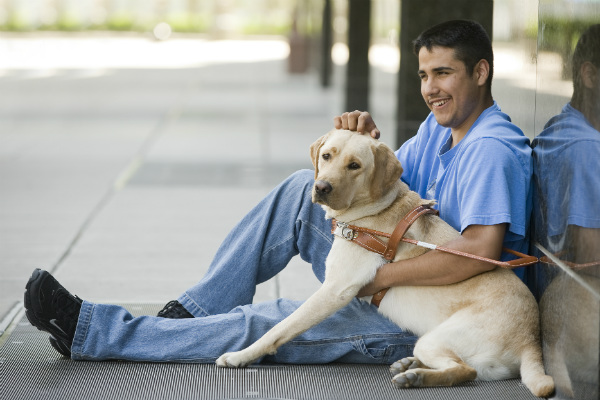
Over the four-month training program, the GDMIs have become quite familiar with the dogs, learning things like their speed and which environments they are most comfortable in. “It’s important that the dog be happy. It’s important that the dog enjoy the type of environment that he's working in,” says Kniffen. Those dogs most at ease in noisy urban environments are best placed with a person who lives or goes into the city, for example. This ensures each client is matched with a dog that fits his or her way of life.
Client/Dog Teamwork
The main task of any Leader Dog is to increase its human partner’s safety. They will move around obstacles, find things like doors or empty seats, alert their partner to moving cars, and stop at level changes such as stairs or the curb. According to Kniffen, the relationship between a client and his service dog is complete and total teamwork. “The dog has to listen to the person; the person has to listen to the dog.” For example, if a client needs to go to the grocery store, it’s the client’s responsibility to know the directions to get there. The dog’s role is to follow those directions safely.

Crossing the street is a perfect example of client/dog teamwork. Kniffen says, “It’s up to the person to give the dog the command when it is safe to cross the street.” The client will listen to the traffic patterns, and when the cars sound like they are moving on the right or left rather than in front, he will give his dog the command to cross. The dog then needs to assess the situation for safety. If there is a car that might be turning, or a car further down the road that the client can’t hear, then the dog will decide not to obey the command, staying in place rather than moving forward. Kniffen describes this as intelligent disobedience and says this sophisticated ability to decide when to follow commands is probably the most important thing that sets a guide dog apart from other service dogs.
Having a guide dog can enhance a client’s life in many ways. Leader Dogs for the Blind client Lisa Hoskins is partnered with Leader Dog Nikko, and she says having Nikko has given her independence. “Something just as simple as walking down the street to the Family Dollar store, walking back, and getting back into my house, I might not do it with a cane. But I'll do it with a dog.” Kevin Perrine, who is partnered with Leader Dog Mickey, agrees, saying, “I think Mickey will help with the safety issue and my confidence.”

Some benefits go beyond the expected. Although Leader Dogs for the Blind’s goal is safe travel, Kniffen has noticed that a wonderful extra benefit is how a guide dog opens the community to a client. “People feel uncomfortable approaching someone who’s blind. They’re not sure what to talk about; they’re afraid they’re going to put their foot in their mouth and say something incorrectly. So, they tend to get cut off from the community quite a bit.” However, once a client has a dog, people are happy to approach. The dog acts as a conversation starter because people want to know what breed the dog is, what the dog’s name is, and what the dog does for the person. Perrine explains, “When you walk with a cane, you stand out. With the dog, people don’t shove you to the side as the ‘poor blind man.’”
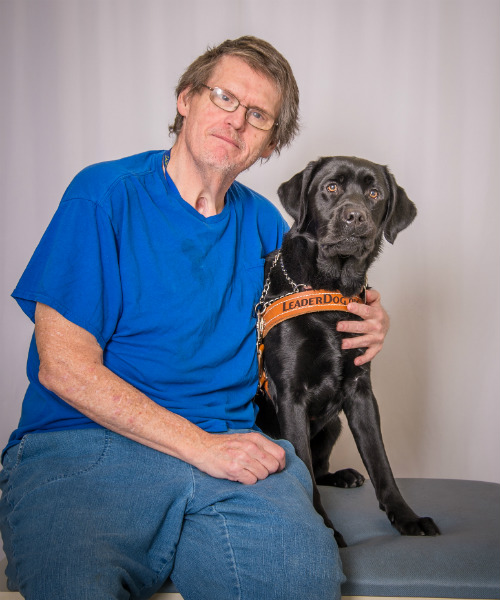
And it’s not just the clients who benefit from the partnership. Because the GDMIs are so exacting during the matching process, the dogs are given a new life that suits their personality. After spending 11 years working at Leader Dogs for the Blind, Kniffen is still astounded by what these dogs can do. “What they’re able to learn and accomplish is just amazing. They do it with a wagging tail and a smile on their face.”


